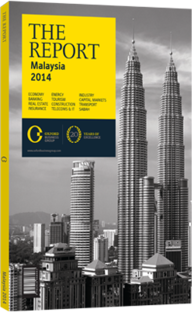OBG talks to Alois Hofbauer, Region Head, Nestlé Malaysia/Singapore

Interview: Alois Hofbauer
What are some of the complexities that foreign food and beverage companies need to understand when entering the Malaysian market?
ALOIS HOFBAUER: There are a few factors to consider. First, Malaysia has a growing population (around 2% a year). It is not yet an ageing population, and there isn’t the sort of stagnant growth one sees in other parts of the world. A second factor is the broadening of the middle class, and a third is that, within the middle class, there is an expanding upper-middle class. In the 1980s and 1990s, Malaysian consumers shifted from buying pure commodities like rice and fish to buying packaged goods like instant noodles and powdered drinks. Today, there is a sizeable and growing upper-middle class in city centres, such as in Kuala Lumpur, Penang and Johor, that looks for upmarket premium products. Malaysia’s food industry, therefore, has the entire value spectrum to serve, from low-income to high-income consumers.
As the rise of health concerns changes consumption patterns, how will this affect the industry’s brands and product portfolios?
HOFBAUER: Malaysia is one of the most complex markets in terms of dietary habits. Because it is a multicultural society comprised of Chinese, Malay and Indian consumers, the first challenge that food and beverage companies face when entering this market is to address all of these different ethnicities and their respective diets and culinary habits.
Global trends also have an effect, such as the move towards nutrition, health and wellness. For example, MILO, the leading chocolate and malt powdered drink in Malaysia, used to be quite sweet and contained about 18 g of sugar per serving. Over the years, this has been reduced to 9.3 g to meet new dietary standards. The World Health Organisation recently submitted draft guidelines keeping their recommendation that sugars make up less than 10% of daily calorie intake. Today MILO already meets these criteria. Such limits will apply to all sugars added to food and beverages, making it ever more important that companies reduce the sugar content of their products in a proactive way.
In what ways will ASEAN integration influence the movement of local brands across the region?
HOFBAUER: For the food and beverage industry, the advantage in ASEAN is a much more interconnected supply chain. In the past, each country had to have its own set-up. Today, a company’s operations in one country can specialise in one product and those in another country can focus on a different product. MILO, for instance, is made in Malaysia and then shipped throughout the region, but Protomalt, MILO’s key ingredient, is made at a highly automated plant, the biggest of its kind, in Singapore and then used in production worldwide. The challenge in ASEAN is that greater interconnection means greater competition. At the moment, large Thai and Indonesian food conglomerates are keen to enter the Malaysian market. However, although scale is important, these companies must also understand and respect the differences in taste between countries and adhere to Malaysian regulations in full.
What are the main challenges in terms of halal certification and supply chain management?
HOFBAUER: In 2013, Malaysia exported RM32.3bn ($10bn) of halal products, 40% of which was food and beverages. The challenge is finding a suitable supplier that is also sharia-compliant. We are currently working with the government to ensure that our suppliers locally and worldwide learn the requirements for halal endorsement. In most cases, small companies do not have the know-how or means to fulfil these on their own. It is the responsibility of larger local companies and global ones like ours to help those producing their raw ingredients meet local halal standards. We are also working intensively with the government on a halal supply chain to have more of the raw materials we purchase be locally made. This will ensure the traceability of halal ingredients and create shared value locally.
You have reached the limit of premium articles you can view for free.
Choose from the options below to purchase print or digital editions of our Reports. You can also purchase a website subscription giving you unlimited access to all of our Reports online for 12 months.
If you have already purchased this Report or have a website subscription, please login to continue.

